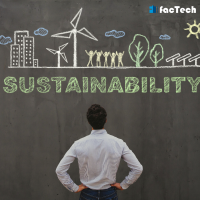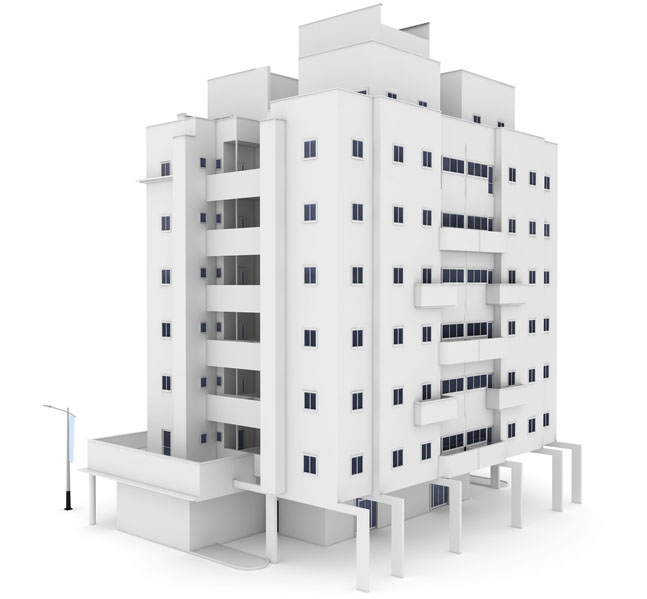Sustainability in Facility Management
In this day and age, where sustainable practices are gaining momentum, facility management has come a long way from just managing a functional space. Just visit any modern facility and you’ll be in awe of the energy-efficient practices and other green initiatives.
Facility managers are pivotal in shaping a greener future with a green built environment. Wondering how? Let’s delve into the different strategies and benefits of sustainability in facility management without any further ado.
What’s Sustainability in Facility Management?
Sustainability refers to maintaining a system continuously over time. In facility management, it essentially means the integration of resource–efficient (green) strategies to create facilities with minimum environmental impact.
You have to consider the efficacy of your facility operations in the long run. For this, you must ensure that they align with ecological and socio-economic principles. Let’s elaborate on this further. As you might know, the built environment takes up a lion’s share in energy consumption. Facility managers can implement strategies and install systems to reduce water usage, prioritise occupant health and cut back on greenhouse gas emissions.
Why is Sustainability in Facility Management Important?

Sustainable practices contribute to mitigating climate change, conserving water, and preserving biodiversity. But how can your business benefit from it? Well, energy-efficient technologies at your facility lead to cost savings. Yes! you can now lower your utility bills. Wait, there’s more. With sustainability in facility management, you enhance indoor air quality, lighting and the overall indoor environment which contributes to occupant safety and well-being.
Your organization in turn builds a positive brand reputation. All you have to do is demonstrate commitment to environmental responsibility. This gravitates all environmentally conscious customers, employees, and stakeholders towards your business.
Now, let’s jump over to the strategies for sustainability in facility management.
Energy Efficiency in Sustainable Facility Management
Embracing energy efficiency is crucial to sustainability in facility management. Operating on lower energy helps mitigate the strain on energy grids and promotes long-term energy security. What else? Well, such systems also align with CSR goals and uplift your brand image. Scroll down to gain a better understanding of the different ways you can achieve energy efficiency.
Smart Lighting Systems for Sustainability

You must have heard about smart lighting systems. Traditional lighting fixtures often waste energy due to inefficient technologies or unnecessary illumination when spaces are unoccupied. Smart lighting systems address these issues by providing automated controls and advanced features that optimize energy usage. These systems offer benefits such as occupancy sensors and daylight harvesting. Here’s a brief on them-
Occupancy sensors:
Smart lighting systems come equipped with occupancy sensors. The benefit? These sensors enable lights to automatically turn on when someone enters a space and turn off when the area is unoccupied, avoiding unnecessary energy consumption. Isn’t that awesome?
Daylight harvesting:
This is yet another smart feature. You can even integrate the lighting with daylight sensors to adjust artificial lighting levels based on the amount of natural light available. This optimizes energy conservation during the day. Yes, this is awesome too.
Energy Audits for Sustainable Facility Management
Energy audits refer to the systematic evaluation of energy consumption patterns for spotting areas of potential improvements.
Facility managers can easily gather energy consumption data through digital facility management systems. Further, they can also perform physical inspections of lighting systems, HVAC equipment, etc. The actual energy consumption is then compared with the pre-defined benchmarks. Such comparison enables setting different energy-saving targets.
Water Conservation in Sustainable Facility Management

There’s no denying the fact that your facility consumes gallons of water for sanitation, landscaping, cooling systems, and manufacturing processes. Wait, does it though? If you’re prioritizing water conservation to help mitigate water scarcity then kudos to you.
Rainwater harvesting and greywater recycling are two of the most innovative approaches to sustainable water usage in facilities. As you might know, rainwater harvesting involves collecting and storing rainwater for non-potable uses such as toilet flushing and cooling systems.
By capturing rainwater from roofs, parking lots, or other surfaces, facilities can reduce reliance on freshwater sources and offset the demand for treated water. Next is greywater recycling. It refers to the treatment and reuse of wastewater generated from sources such as sinks and showers.
Water Management Platform 
Indoor Air Quality in Sustainable Facility Management
Poor indoor air quality (IAQ) has a deleterious effect on your health- allergies, respiratory diseases and whatnot. As a facility manager, you must implement different strategies to improve the air quality inside your buildings.
Ventilation and Air Filtration for Sustainability
Want to maintain good IAQ? A proper ventilation system is the key. Make sure that your buildings have adequate ventilation systems supplying fresh air and exhausting pollutants. You can achieve this by installing and maintaining HVAC systems. Such systems have features like air filters, air exchanges, and control mechanisms. Let’s understand more about air filtration systems.
Air filtration systems capture and remove airborne pollutants, such as dust and volatile organic compounds (VOCs). You need to select high-quality air filters and establish a regular maintenance schedule to ensure their effectiveness.
Non-Toxic Cleaning Products for Sustainability
Your regular cleaning products contain toxic chemicals that retrograde the air quality. You should prioritize the selection of eco-friendly, non-toxic, and low-VOC cleaning products. Furthermore, regular dusting, vacuuming, and preventive maintenance of HVAC systems, can help reduce the accumulation of allergens, dust, and other pollutants.
ESG Reports of Buildings
Digital FM for Sustainability in Facility Management

Digital facility management is paving the way for sustainable building practices. Smart building technologies enable efficient energy management and reduce environmental impact by utilizing sensors, automation systems, and data analytics.
Digital FM software streamlines operations, centralizes data, and facilitates better decision-making, leading to improved resource allocation, cost reduction, and finally enhanced sustainability.
Data analytics provides valuable insights into energy usage patterns, operational performance, and areas for improvement. By analyzing such data from various sources, you can identify and prioritize sustainability initiatives.
Read more: Four easy steps for facility managers master digital FMTech.
Wrapping it up
Sustainability in facility management is also about embracing innovation as much as it’s about being environmentally conscious. By leveraging smart building technologies and digital FM software, you can create greener, smarter, and more sustainable spaces.
If you have any questions or suggestions to add, don’t hesitate and leave a comment. Until next time!









